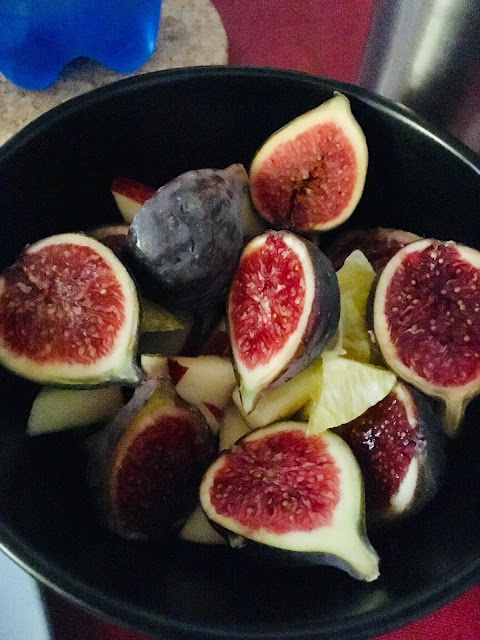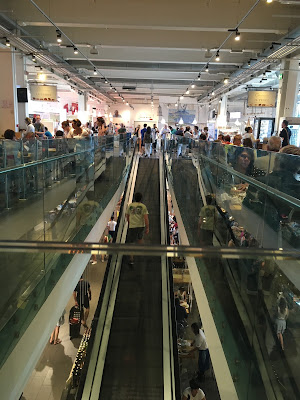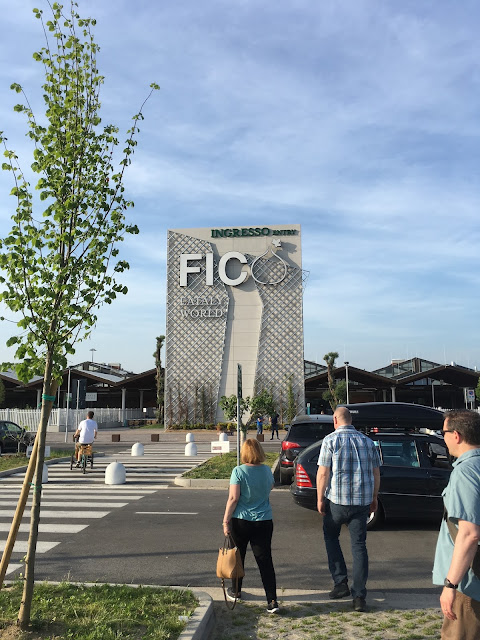People living in a wide swath of cities around the globe are familiar with the Eataly chain: a store concept associated with the Slow Food movement, featuring only Italian made foods, ingredients and products. Little Eatalies are in many cities outside of Italy. The biggest such store is the one in Rome, which occupies four floors of Italian foodie goodness. Shopping there is as close to a food mall experience as you will ever get here, and it requires a commitment of at least a few hours.
You shop, you taste things, you park your cart and have a meal or just a drink, and you shop some more. You can go for a thematic food festival and try all kinds of things. You can take a cooking class on the top floor. It is a lot of fun.
Wines occupy a whole floor, and are divided by region. Remember that Italy has only recently outpaced France in terms of wine production (France still makes more money off their wine, but it's because they charge more per bottle).
It has only been during the pandemic that we learned why there was always such a line outside the pizza restaurant inside Eataly.
Oh, we said. No wonder. Delicious!
The absolute BIGGEST version of Eataly is located just outside of Bologna - a foodie city, for sure - and it is a giant sprawl involving not just the Eataly concept in its essential form. It also includes
on-site food production displays and laboratories, as well as whole agricultural displays with an active chicken yard and coop, cows and goats...It is tailored to not just the individual consumer but also corporate clientele. A special city bus in Bologna takes you there. The place is so big, you can grab a bicycle outfitted with a cart and ride around inside, shopping, eating, watching chickens, whatever.
This mega-Eataly is known simply as 'Fico.'
Friends, that's a LOT OF SALAMI.
Ahem. Excuse me. SalUmi. Not salami.
Naturally, the chickens get to roam a bit here.
(Every time I scroll past this image in my phone photos, I remember...best. popsicle. ever.)
Fico in slang vernacular is 'cool.'
Fico is also, more directly, Italian for 'fig.'
Some readers of this post need no introduction to the humble fig. I certainly knew what a fig was before moving to Italy, but I only came to understand its importance to this country - as well as the world, really - and its history over time.
Botanically speaking, the fig is a kind of wonder. Its flowers grow inside the fruit. That fruit can often contain remnants of the fig wasp that participates in its fertilization. People often say that they have sliced open a fig and found some waspy remains. Tasty!
At the same time, the sap from the fig plant/tree is poisonous to humans.
Have these realities stopped Italians from prizing figs? Absolutely not.
Figs are an excellent source of calcium, potassium and a moderate source of fiber, and if you like your fruit on the less 'dolce' side, then plenty of fig types land on the not-so-sweet end of the scale.
Most superficially speaking, the fig is something you can expect to find sold by your Italian fruit and veg stands during the latter summer months. I don't know if this is a climate change thing, but fig availability seems to be widening, time-wise. This summer in particular has been very, very figgy for awhile.
There are a number of varieties, and of course all food snobs swoon over Mission figs, but I'm not sure why. They are beautiful, of course, with their bruise-colored skins. But the yellow-green ones pictured above are, I've discovered this summer, like honey in fruit form. Incredible.
When you get figs, you have to get busy. They are incredibly fragile and short-lived. You have to eat them within a day or two, or figure out what you will do with them so that you can preserve them. I'm still saving a jar of rosemary fig jam from a friend. I brought it here with me five years ago. Those of us from the South, in particular, know the value of a preserved item like that, born of much kitchen labor and sweat over a stove.
When we requested an apartment in the city center of Rome, we did not think about trees. As in, we did not think we would be almost completely deprived of trees. But more or less, we are.
On my way to visit my favorite art supply store, hair stylist or butcher, there is one, lone tree situated between two buildings.
It reaches out for the sunlight and shades a few feet of sidewalk in the warmer months. To me, its insistence and resilience is a bit astonishing.
I've come to think of this as 'my' tree. I am utterly charmed by it. I stop and regard its status on every walk I take near its vicinity.
After several trips underneath it, over time, I noticed that there was a lot of bird poop on the ground underneath this tree.
And eventually, I happened to notice a smushed fig on the ground, too. Ah, it's a fig tree!
Obviously, this tree has been in this location for some time, and the birds benefit - so much so that sighting any growing figs still on the branches is a challenge.
I can't really say for certain whether volunteer fig trees are considered problematic here, but what I have noticed in my city wanderings is that they tend to appear in assertive ways, and at least some are allowed to flourish, however impossibly.
Of course, it turns out that fig trees are ruggedly drought tolerant. They root VERY deeply.
A favorite small piazza near my apartment is in fact called Piazza del Fico. Old men sit underneath the lone fig tree and play chess. There is such regard for this tree that despite its age and sag, it is lashed to a building so that it remains upright and provides shade. Look closely for the tether above the extreme bend in the trunk, below:
By now, you are probably recalling that the fig leaf is the historically understood way to make a frontal image of a nude human being more PG. And quite rightly so, as its size covers a lot of area.
Upon delving further into the topic for a book structures project (when we are conversing in person, ask me more about this, as I could show you the result), I found that the humble fig has an extraordinary history.
Not only did the twins Romulus and Remus survive their mythic abandonment - set adrift in a basket on the Tiber, only to arrive here and be suckled by a she-wolf (or a prostitute, we will never be certain, except that the Italian term is the same for both creatures) - courtesy of a wild animal, they were also sated by figs from a tree on the river shoreline.
Augustus Caesar made sure to plant sacred fig trees on and around the Capitoline hill. They were always revered during the festival known as the Lupercalia (remember the twins' story above, and that the term for both wolf and prostitute is 'lupo' (m) or lupa' (f)).
Romans believed that the fig tree could thwart deadly lightening in a storm.
Adam and Eve never picked an apple from the Tree of Knowledge (wrong part of the world for apples!), but instead, probably sampled figs from that tree before being cast out of the Garden.
Jesus Christ is described as having cursed a fig tree, causing it to wither.
Judas hung himself - in shame and despondency, following his treachery - from a fig tree.
Mohammed insisted that every man in possession of a fig tree was a man with wealth.
Buddha reached enlightenment underneath....sure, you guessed it, a fig tree.
Here is a small watercolor on parchment by artist Giovanna Garzoni (1600-1670), one of the rare female painters to be represented in the famous Medici family's collection of curiosities. She has to have had either a steady collection of figs she could rotate in and out while painting from this still life, or she was a fast painter. To get watercolor to dry on this unique surface, she had to apply it in thin washes and tiny dots.
If you have a fig tree, you are a fortunate person. If it is bountiful, you are of course a fortunate person with a lot of fig-loving friends, probably, eager to arrive for that short window of time to harvest, process and enjoy the fruit.
If you have a farmer's market and you encounter figs for sale, buy a few and (carefully!) bring them home.
Slice them open. Regard their unique structures. They are beautiful! Look for waspy remains.
Reflect on their longstanding relationship to - and widely varied meaning for - humankind.
When you eat a fig, you are not only 'cool,' you are partaking in a deep history of rescue, protection, risk, nourishment and abundance.
























No comments:
Post a Comment